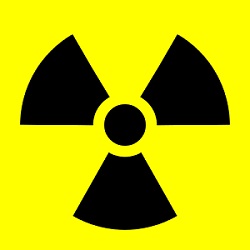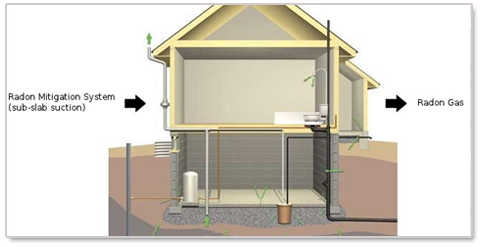Protecting Your Iowa Home from Radon
If you live in Iowa, you have probably heard a little bit about the dangers of radon gas. What exactly is radon? It is an odorless, colorless, tasteless, radioactive gas that forms naturally as a result of the decay of uranium in the soil. The reason that radon is so dangerous is that it is carcinogenic, meaning that it can cause cancer, and it is so hard to notice and control. This making radon one of the leading causes of lung cancer, second 0nly to smoking. Fortunately, there are a lot of things that you can do to keep radon out of your home and away from your family.

The first step in radon protection is to examine various ways that radon could enter your home. Normally, radon enters homes through the soil below the foundation. It can seep through any foundation cracks that may be present in your home, through gaps near pipes and wires, through sum pits, or through construction joints. Although most radon enters through the foundations, some radon could enter through your water. If you have well water, there is a chance that radon could seep into the water and later re-evaporate in you home through the use of water.
This is why it is important to make sure that any foundation cracks in your home are taken care of and to consult a radon mitigation expert to check for radon in your water.
Testing and Mitigation to Protect Your Iowa Home from Radon
Here at Ameriserv Radon Mitigation of Iowa, we offer a couple of different options to test your home for radon. These options include:
- DIY Radon Tests: These can be purchased for $15, and can be done in around 48-96 hours to get an idea of radon levels.
- Short Term Radon Tests: This test takes around 2-7 days and can measure radon levels in your home over a short time.
- Long Term Radon Tests: These tests normally take over 90 days, and give an accurate idea of average radon levels.
 Once you have tested your home for radon, what do you do with the test results? If the tests show that the radon level is below 4.0 pCi/L, you can perform a long term test to be sure, or you can test again in a few years. Radon levels from 4.0 pCi/L are considered dangerous, and another test should be administered right away. If the average of these two tests is above 4.0 pCi/L, consider investing in radon mitigation. Any radon test results showing a level of 8.0 pCi/L or greater should be followed by a second test, and, if the second test is consistent with the first, radon mitigation should be performed immediately.
Once you have tested your home for radon, what do you do with the test results? If the tests show that the radon level is below 4.0 pCi/L, you can perform a long term test to be sure, or you can test again in a few years. Radon levels from 4.0 pCi/L are considered dangerous, and another test should be administered right away. If the average of these two tests is above 4.0 pCi/L, consider investing in radon mitigation. Any radon test results showing a level of 8.0 pCi/L or greater should be followed by a second test, and, if the second test is consistent with the first, radon mitigation should be performed immediately.
If you are concerned about the high level of radon from your test results, call Ameriserv Radon Mitigation today to install a professional radon mitigation system. Usually, the mitigation system will consist of a pipe connected to the basement floor to vent out radon, and a fan that helps the radon travel up the pipe and out of the home. This can greatly reduce the amount of radon that is allowed to enter your home through the foundation.
For more information on radon levels and what to do to prevent radon exposure in your home, contact Ameriserv Radon Mitigation of Iowa right away.
 Our Response to COVID-19
Our Response to COVID-19 
